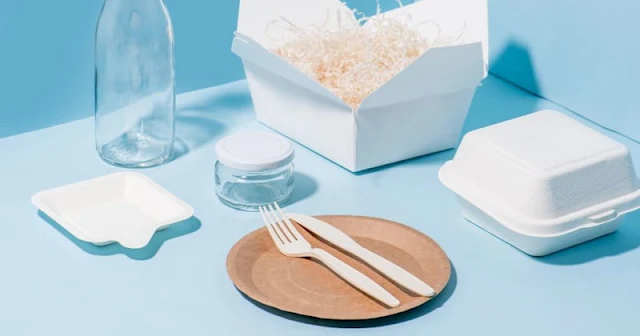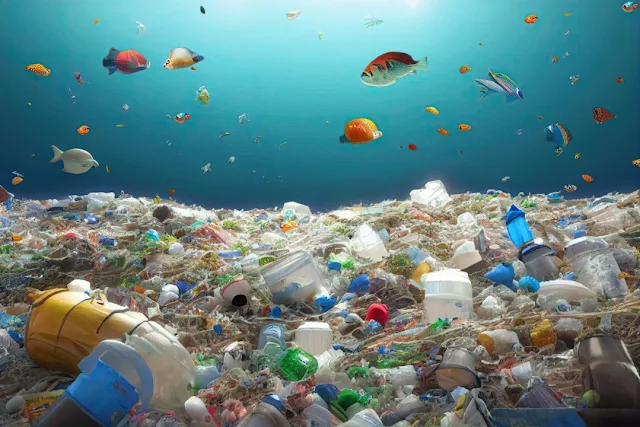Biodegradable plastics and bioplastics, are contributing towards reducing plastic pollution, as advancements in technology will improve their biodegradability and environmental impact.
Plastics are one of the commonly used packaging materials. Most of the industries like food, beverage and pharmaceuticals in the United States prefer plastic packaging due to its protection against contamination, preservation, and transportation flexibility. Researchers are very much concerned about Health Hazards of Plastic Wastes and Introducing Bioplastics as an alternate.
The packaging segment holds the largest share in the US and the global market. Anticipated growth in demand of Plastic materials is attributed to the Automobile industry, Home Appliances and packaged food in particular. And most certainly, the demand is increasing rapidly.
The most common type of plastics used for packaging are polystyrene. Recently, the Governments and Scientists are very much concerned about recycling practices related to Polystyrene as only a 15% of the total polystyrene waste is recycled every year and remaining is left in the environment unrecycled leaving harmful impacts to the ecosystem. To look into the topic related to polystyrene waste in detail, please click here.

The global plastic production in 2023 was estimated as 400 million metric tons. The plastic production in United States was valued at $170 billion in 2023. The demand for engineered plastic products is increasing gradually in the country due to increasing prices of metal based products.
For example, the automotive industry extensively employs various types of plastic to manufacture Electric-vehicles, leveraging their versatility, ease of manufacturing, moldability, lightweight nature, waterproof properties, and cost-effectiveness.
Consequently, the rising trends of e-vehicles has generated significant opportunities for both existing and new plastic manufacturers. Plastic plays an important role in automotive components such as dashboards, seat covers, indicators etc offering strength and manufacturing flexibility through injection-molded production techniques.

Major Segments of Plastic Consumption
Based on end-use industry, the market is segmented into automotive & transportation, packaging, consumer goods, lifestyle, infrastructure & construction, healthcare & pharmaceutical, electrical & electronics, home appliances, textile and others.
However, based on type, the market is segmented into most commonly used polyvinyl chloride PVC, polyethylene, polyethylene terephthalate, polypropylene, polyamide, acrylonitrile butadiene styrene, polycarbonate, polyurethane, polystyrene, and some others.
Plastic Waste Management Practices in United States
United States is one of the largest producer of plastic products worldwide. The US only generates over 75 million metric tons of plastic waste every year of which more than 80% is recycled locally for manufacturing recycled plastic products. But still a substantial quantity of un-recycled plastic enters the ocean each year.
Most plastics do not biodegrade and instead break down into microplastics which persist in the environment for centuries, or even longer polluting our water, air, and soil and thus penetrating human body creating health concerns.
Here the major contributor to this pollution is the use of conventional Single-use plastics. Single-use plastic products include plastic and polystyrene food and beverage containers, bottles, straws, cups, cutlery and disposable plastic bags that are intended to be used once and discarded.

Global Restrictions on Single-Use Plastic Products
The US has implemented bans on using plastic bag across California, Delaware, Hawaii, Maine, New York, Oregon, and Vermont. Additionally, the U.S. government has shown this concern to plastic resin manufacturing companies to cease producing single-use plastics. Therefore, these regulations are expected to impede plastic consumption across various end-use industries.
Additionally, owing to the global concerns of environmental pollution due to plastic products, representatives of member states of the United Nations endorsed a historic resolution titled “End Plastic Pollution” at the United Nations Environment Assembly (UNEA) on 02 March 2022, to end plastic pollution by 2024.

Introducing Biodegradable Plastics - The Alternate to Plastic
Due to increased emphasis on sustainability globally, companies are focusing on biodegradable plastics that come from renewable sources and can be used to reduce the problem of plastic waste that is suffocating the planet and contaminating the environment.
One of the example of biodegradable plastics is the Compostable Cold Cups which are molded from polylactic acid resin extracted from corn grown in the United States to form clear plastic cups with vegetable-based ink on the outside.
Technically the conventional plastics are actually Crude Oil derivatives and such petroleum based polymers are therefore fossil fuel based.
On the other hand, bioplastics are plant based naturally formed biopolymers of biomass like starch and cellulose mainly obtained from Corn, Sugarcane, Sugar beet, Potatoes, Wheat, Rice, Sorghum and Barley and break down completely through a natural process. Bioplastics refers to the family of plastic materials which are either Biobased or Biodegradable or they have properties of both.

While bioplastics are the ones made out of organic materials, biodegradable plastics are petroleum-based but combined with additives which makes them easier to decompose. While both sound equally green and eco-friendly, there are significant environmental concerns over the decay process of biodegradable plastics.
Biodegradable plastics, despite the presence of additives, need suitable temperature, light, moisture, and oxygen conditions to decompose. In the absence of these, biodegradable plastics can accumulate just like conventional plastics. That is why, biodegradable plastics are not home compostable and need to be sent to industrial composting units having required conditions for biodegradation of plastics.
However, bioplastics, being completely organic in nature are easy to breakdown at the end of useful life cycle. It gives bioplastics an edge over the biodegradable varieties when it comes to addressing the ecological issues.
Since the costs of producing bioplastics is too high, they are still not as affordable as conventional plastics.
To read about modern sustainable agriculture practices to produce crops for bioplastics, please study our blog.
Commercial Uses of Biodegradable Plastics
Many plastic packaging products are being manufactured using bioplastic sources like bioplastic packaging, bags, bottles, biodegradable compost bags, disposable cutlery and tableware etc.

The bioplastic materials used in the food packaging industry are good at maintaining quality. The food remains free of toxic chemicals while being able to maintain its freshness.

They are also replacing the markets for conventional plastics for disposable houseware and kitchen utilities, storage utensils, biodegradable cups, bio plastic bottles, hangers, plastic shelves, toys, bathroom utilities etc.
Various medical procedures use bioplastics for their excellent properties. Non-toxic versions of biodegradable plastics are used for sutures in heart operations and other similar procedures. The sutures are easy to sterilize, give the required tensile strength properties and get dissolved easily within the body.
Other biodegradable medical devices like orthopedic pins, dental implants, skin staplers, dissolvable medical screws are also used.

Electronic items like touch screen computer casings, keyboards, earphones, mobile phones, loudspeakers, laptops, game consoles, mobile casings, mouse, vacuum cleaners, etc are now being made out of bioplastics and biodegradable plastics.


Comments
Post a Comment